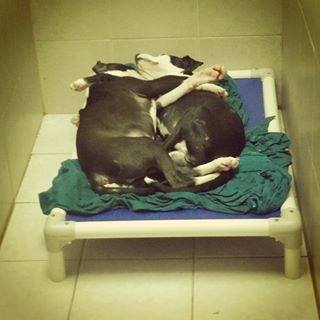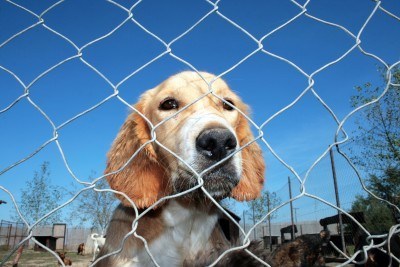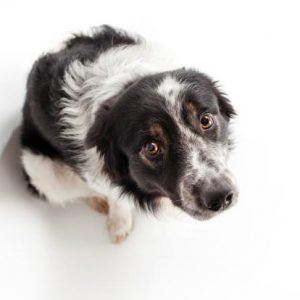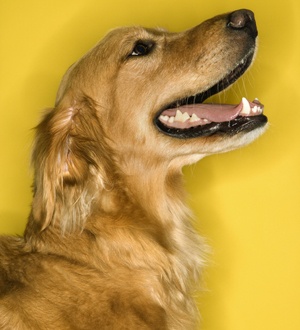Brotherly Love: The Story Behind the Photo
 Jeffrey
and Jermaine are looking for their forever home together. They pair,
shown here in an embrace, are not only bonded for life, but Jermaine
serves as his blind brother, Jeffrey's guide dog! Photo credit Chester
County SPCA.
Jeffrey
and Jermaine are looking for their forever home together. They pair,
shown here in an embrace, are not only bonded for life, but Jermaine
serves as his blind brother, Jeffrey's guide dog! Photo credit Chester
County SPCA.A photo of 8-month old brothers Jeffrey and Jermaine went viral after a photo of the pair embracing while they slept was posted by the Chester County SPCA last Friday.
A caption on the touching photo reads,
Pictures are worth a thousand words, but this one might just leave you speechless. Earlier we posted a picture of Jeffrey, who is blind, and his brother Jermaine, who has dedicated his life to be Jeffrey’s loyal guide dog. Here they are as they sleep, holding on to each other. The unconditional love and devotion these two dogs show is positively inspirational. Jeffrey and Jermaine are STILL waiting at shelter Operation Ava in Philadelphia for their hero to come rescue them! Please open your heart and home to them! For more information or adoption inquiries, please contact Operation Ava at (215) 240-1240 or visit their website www.operationava.org.The dogs’ love and devotion to one another goes far beyond an adorable embrace. Jeffrey is blind and his brother, Jermaine, serves as his guide dog!
The pair are currently looking for their forever home – together. The Chester County SPCA is taking applications for potential adopters until 5:00pm today, November 19, after which rescuers from Operation Ava will choose the perfect family for the special needs pair. The dogs are currently sheltered in Chester County, PA.
For more information or adoption inquiries, please contact Operation Ava at (215) 240-1240 or visit their website www.operationava.org.













